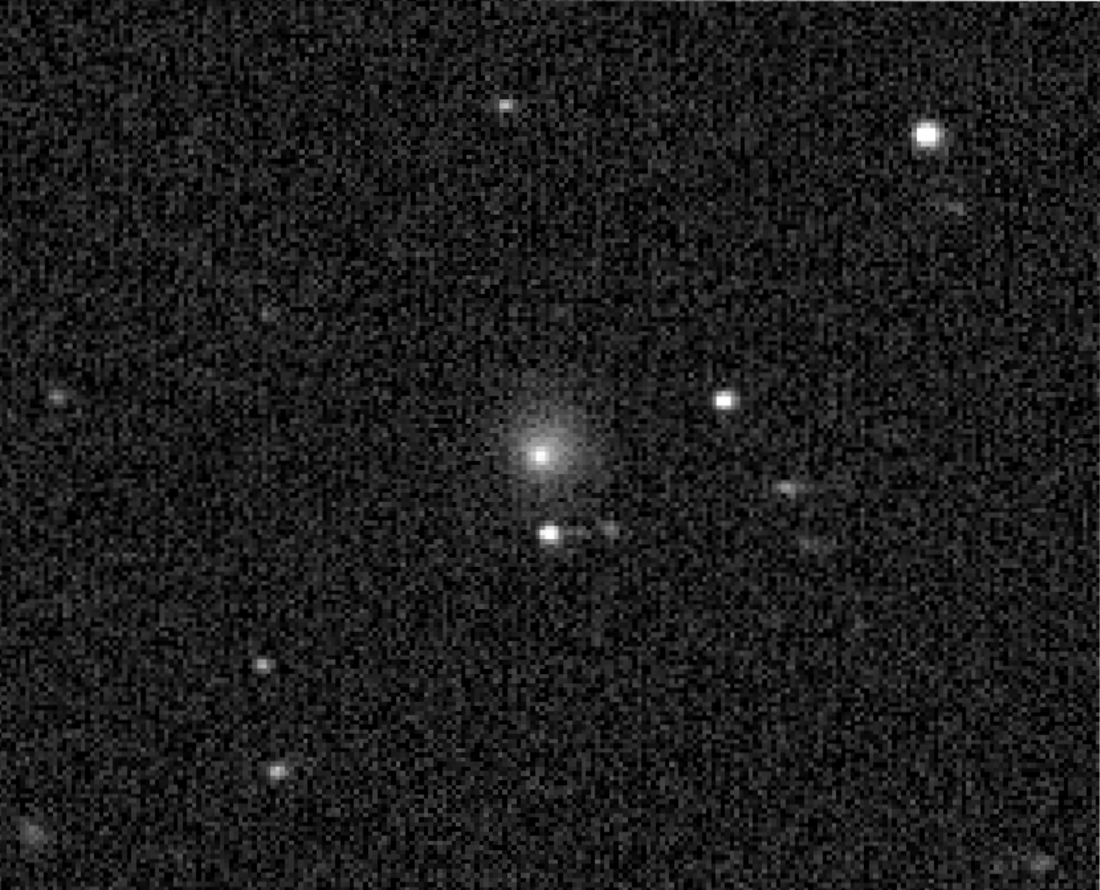Top Qs
Timeline
Chat
Perspective
97P/Metcalf–Brewington
Periodic comet From Wikipedia, the free encyclopedia
Remove ads
97P/Metcalf–Brewington is a periodic Jupiter-family comet originally discovered by Joel H. Metcalf in 1906 but subsequently lost.[6] A new observation in 1991 by Howard J. Brewington was matched to the 1906 sighting; the orbit was computed and the comet was observed again on its returns to perihelion in 2001, 2011, and 2022.[6]
Remove ads
Observational history
Summarize
Perspective
1906 discovery
On photographic plates taken on 15 November 1906, Joel H. Metcalf discovered the comet as a 12th-magnitude object within the constellation Eridanus.[a]
1914–1922 apparitions and loss
The comet passed about 0.86 AU (129 million km) from Jupiter on September 1911, perturbing its orbit enough for astronomers to revise their calculations for the 1914 and 1922 apparitions.[7] Henrietta Swan Leavitt reported that she may have recovered Metcalf's comet in 1915, however the two images she took were later confirmed to be that of 393 Lampetia instead.[8] The comet was never found after its last reported observation on 16 January 1907 and after a series of orbital calculations showed that viewing conditions were unfavorable on each subsequent apparition until 1975,[2] it was declared lost after 1922.[7]
1991 rediscovery
Until 1975, Metcalf's comet was expected to appear no brighter than magnitude 18, although no attempts were made to find the comet due to unfavorable conditions.[9] In 7 January 1991, Howard J. Brewington discovered a new comet within the constellation Cetus,[b] which was verified by Alan Hale in the same night.[10] Following additional observations by Katsuhito Ohtsuka and Robert H. McNaught between 7 and 9 January 1991, Brian G. Marsden noted that the orbit of Brewington's comet strongly resembled that of Metcalf's comet in 1906, concluding that they are one and the same object.[11] It is later determined that the previous calculations for the 1914 and 1922 apparitions were off by a few days and a couple months respectively, which caused the failure of this comet's recovery during those apparitions.[7]
Analysis of its light-curve revealed that during its 1991 apparition, comet Metcalf–Brewington had just experienced a massive outburst that brightened up the comet by 11 magnitudes![12] It was later determined that it might be caused by thermal stresses on an exposed ice pocket rich in hydrogen cyanide (HCN) gas, which cracked the crust of its nucleus during perihelion.[12]
Recent observations
Shortly after being recovered, revised orbital calculations for the comet has revealed that it made a close encounter with Jupiter at a distance of 0.11 AU (16 million km) in March 1993, where it was also predicted to return by 2000 or 2001.[13]
In October 2021, the comet experienced an outburst that expelled material out to 19,400 km (12,100 mi) from its nucleus, resulting in a temporary rise in apparent magnitude from 18 to 16.[14]
Remove ads
See also
References
External links
Wikiwand - on
Seamless Wikipedia browsing. On steroids.
Remove ads

